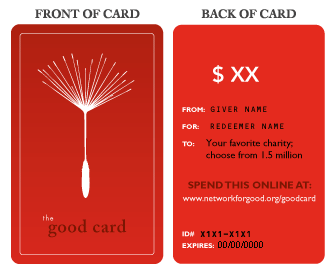
I've pulled select bits from her article below - but please click here to read it in its entirety if you have the chance.
Happy New Year everyone!!Resolution #1: Make your Web copy relevant [My readers will recognize this as "storytelling" - something I talk about a great deal in my own posts] ...create market-specific content (copy, images, and/or interactive graphics) for each of your target markets. At a minimum, add this content to the top-tier pages of your Web site this year (those pages that have the highest number of hits such as your homepage). Even if you do nothing else to drive more traffic to your site, the visitors you DO receive will now be much more likely to connect with your organization.
Resolution #2: Boost your online social savvy [My readers will recognize this as "social networking" - something I also talk about a great deal] ...To stay competitive, nonprofits must stay up to speed on the latest tools of social marketing, and understand how these tools may (or may not) grab the attention of their target markets.
Resolution #3: Ask for permission
... Adding such a "lead capture tool" to your Web site is now easier than ever. In fact, most email distribution services (such as aWeber, CoolerEmail) can help you add a lead capture tool to your site in a manner of minutes, even if you are not technically savvy. Remember - the best lead capture tools offer something of value in exchange for gathering the user's contact information. For instance, a subscription to a valuable e-Newsletter, a relevant white paper download, or a resource guide.Resolution #4: Get noticed
[I would add here that a great public relations plan - something we specialize in at Cause+Effect - is one great way to be sure your organization gets noticed] ...With the right positioning on the Web..., nonprofits can cost-effectively find new customers, donors, members, volunteers or advocates. And in turn, they can also boost their market share, revenue, funds, membership lists, and even amplify their success with national outreach campaigns.Resolution #5: Track, track, track
... Focus on analyzing basic traffic data every quarter or so, such as: hits per month; average page views per visitor, conversion rates (ratio of hits per how many people took the action you wanted them to take, like make donation, purchase a product, or sign up for your e-newsletter); and referring sites or keywords (these tell you how people are finding you).
























